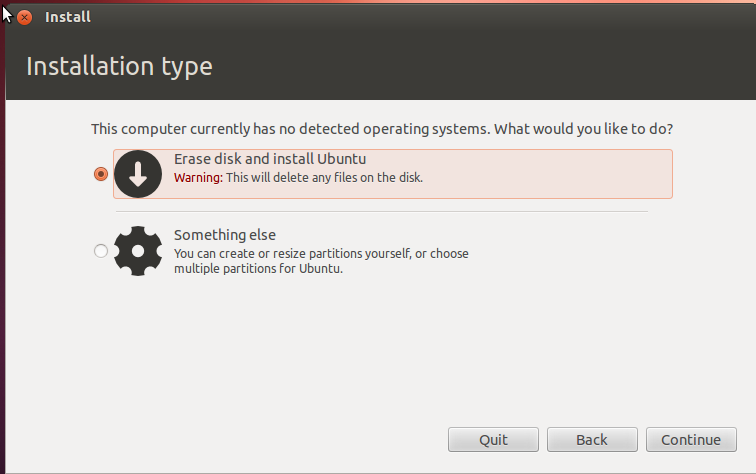Breaking News
How To Install Ubuntu From A Usb Hard Drive
пятница 16 ноября admin 39
Telugu stalin video songs download. Click the install Ubuntu icon from the desktop to begin the installation; At step four Prepare disk space, select the Guided-use entire disk option and elect to install to your USB hard drive: When the installation has finished, select the option to restart-now; Boot into your system BIOS or Boot Menu and elect to boot from your USB Hard drive.
I'm trying to install Ubuntu onto a portable USB 3.0 1 TB hard drive. I want to be able to boot off of the hard drive when it's plugged in to a computer and run Ubuntu solely off of it. I've tried multiple times and was able to successfully install Ubuntu but couldn't get the hard drive itself to boot. I am using a 32 gb flash drive with a Ubuntu installer on it and I am able to boot from it, try Ubuntu, and launcher the installer.
I start the installer and chose 'Something else' in the installation page, then I set up two partitions on my drive, an 800 gb ext4 partition for Ubuntu with the mount point the root '/'. The next is 12 gb swap partition. And the other ~188gb as free space. The bootloader is also set for the root of the external drive.
The installer will run through and complete. However after when I finally try to boot from it. My bios won't recognize it as a bootable device. USB booting is enabled in my bios and I've tried a few computers and it won't show up in the boot options. But other usbs like the Ubuntu installer will show up.
So I'm pretty much lost as what to do. I've experimented with so many different partition types and nothing works. I see on the external drive the Ubuntu files are all there but I can not boot it.
I'm pretty sure the issue has to be something with the bootloader since the installation goes smoothly. I've tried searching the forums and it seems like there shouldn't be an issue.
If you are trying to boot in UEFI mode, you should put an EFI partition (300M, FAT fs) partition on the external, then copy the internal disk's EFI partition to the external EFI. Then copy grubx64.efi and shimx64.efi from the external's /EFI/ubuntu to /EFI/Boot, then rename /EFI/Boot/shimx4.efi to /EFI/Boot/bootx64.efi. Could you elaborate more on the efi partition? I have one on the external drive. My external has a ext4, swap, and efi partition.
How to I access the efi partition on the ubuntu usb trial, since it doesn't show up in file manager, but does in gparted? Also what do you mean by internal drive? If you mean the internal drive of the computer, well its a windows 10 os on the internal drive so I dont know how the internal's drive efi related to that then.
Also I'm confused on what you mean by '/EFI/ubuntu', on the root of the drive '/' there is no efi folder, its just the ubuntu os files like 'bin,boot,dev,etc,home, and so on. From /boot there is an efi folder and grub folder, not sure if this is what you mean. The bootloader is also set for the root of the external drive. This is part of the problem. I will take the liberty of offering this bit of information: When you do a UEFI install of Ubuntu, the grub boot loader installs only to the EFI system partiton of your primary drive (sda) regardless of what you specify during the installation.
A boot directly to sdb is not possible without a further fix. With the usb connected, are you able to boot Ubuntu by booting to sda - either through the UEFI boot manager or through grub? I think there would be Ubuntu boot files installed in the EFI system partition of sda. I have never done a UEFI install to a portable USB drive, but ubfan1's advice is what I have read needs to be done to boot directly from sdb in UEFI mode. I will defer to him or others for further assistance in carrying out those steps, since I haven't done this myself. Just to clarify there are 2 usb's in the scenario, one is the external hard drive usb, and one is a flash drive usb with the ubuntu installer.
